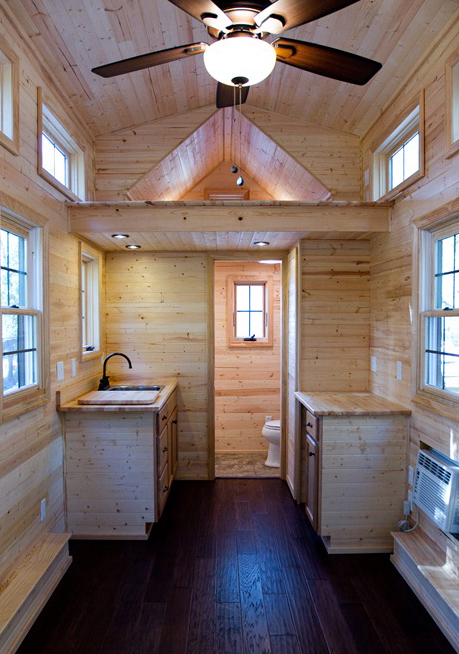If you are even a casual fan of TV channels like HGTV, you’re sure to have noticed our nation’s current real estate obsession: Tiny Houses. Tiny House living can offer more financial freedom, more mobility, a lower environmental footprint, and an emphasis on experience over stuff. People who have adopted this lifestyle typically want to live a simpler, more pared-down life, and the rest of us want to watch them do it.
These homes have come a long way in the past five years. Designs for them have gone from extremely simple structures that are more affordable than the average new car, to extensive thought and design – including “Smart” Tiny Homes that can live “off the grid” using solar power and water recycling.
To the contemporary Tiny House purist, the structure is very small and simple. This usually means less than 300 square feet and a loft for the bed.
The “Tiny Living” model (shown below) is offered by Tiny Home Builders. They offer everything from pre-built homes and basic shells to tiny house plans.
Keeping the home on wheels allows everything from moving whenever the mood strikes you, to overcoming issues with building codes that require permanent structures to have a larger square footage.
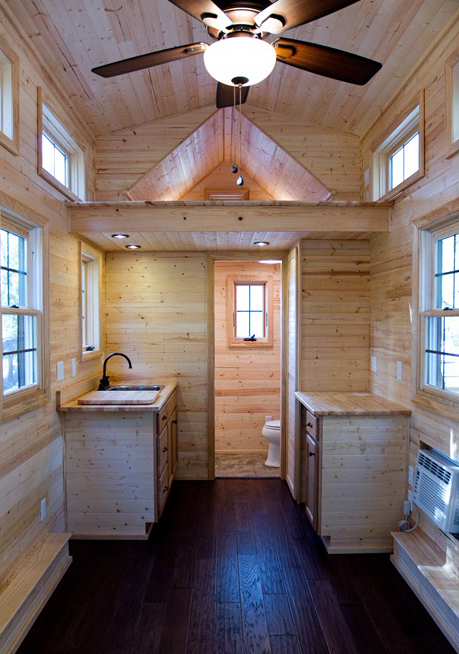
Interiors are designed to be simple, providing basic needs and amenities without a lot of flourish or detail.
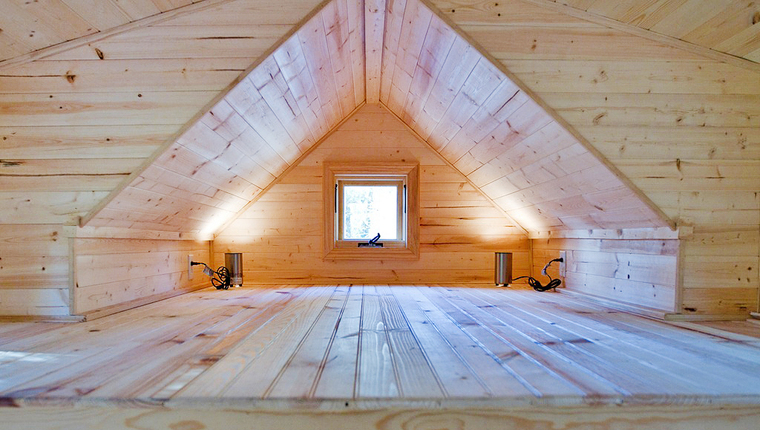
Sleeping lofts are the norm, so if you have an issue with climbing stairs or ladders then a larger model with a main floor sleeping option is definitely a better choice.
A great example of how far they have come with regards to space and amenities is the Farallon model by the Tumbleweed Tinyhouse Company.
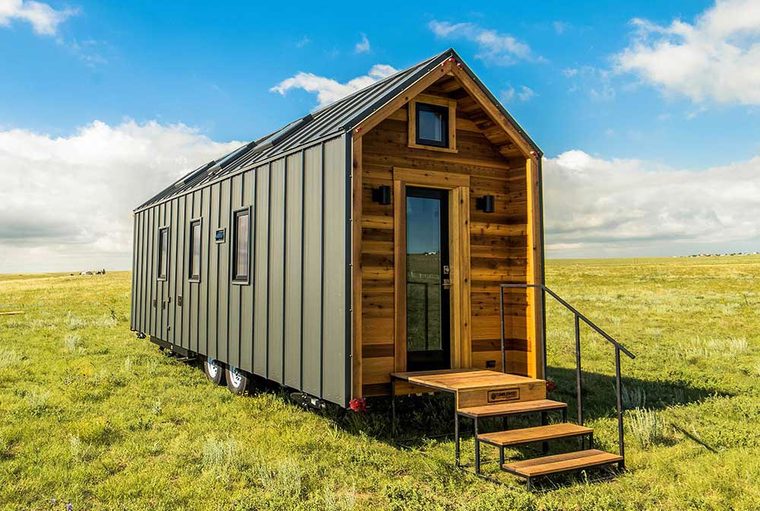
They offer two sizes with a useable space option of 218 square feet or 246 square feet and the roof is just begging to have solar panels installed.
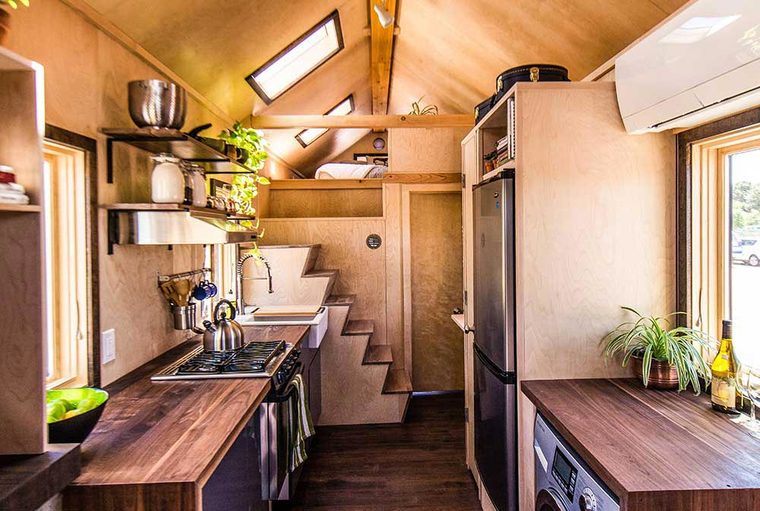
Not only does this model provide what looks like a decent amount of counter space, it also has a main floor bed and bath, unlike many other tiny homes that only provide a sleeping loft.
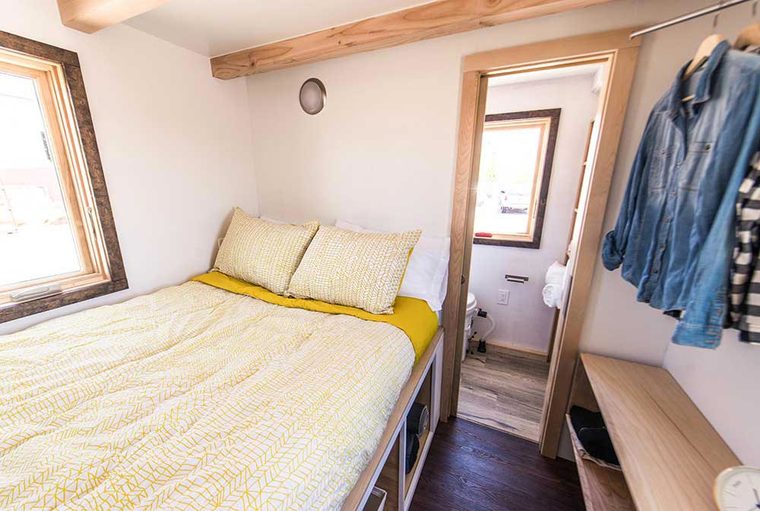
The cost for this kind of tiny living starts at $62,950 – $72,950.
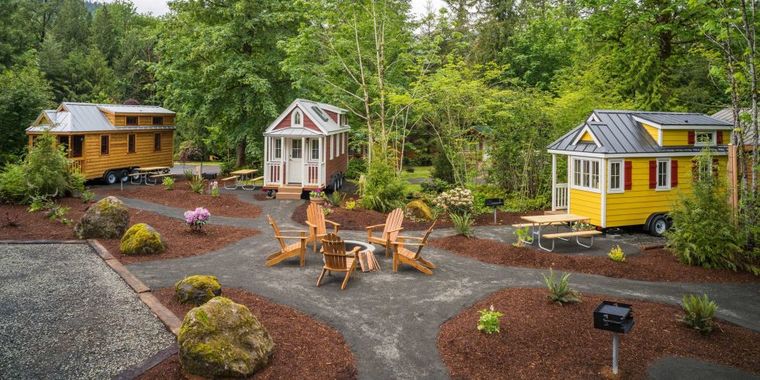
Many people who adopt the tiny house lifestyle say that communities are the key to a happy and successful living environment. Another trick to living large in small spaces is to have great public places to go to – preferably by foot or bike. Creating a micro-friendly community requires careful planning, walkability, and dedicated public spaces, but for those who achieve this trifecta of tiny living, the rewards can be anything but tiny.
This blog originally appeared on Windermere Spaces and Places.
 Facebook
Facebook
 X
X
 Pinterest
Pinterest
 Copy Link
Copy Link
